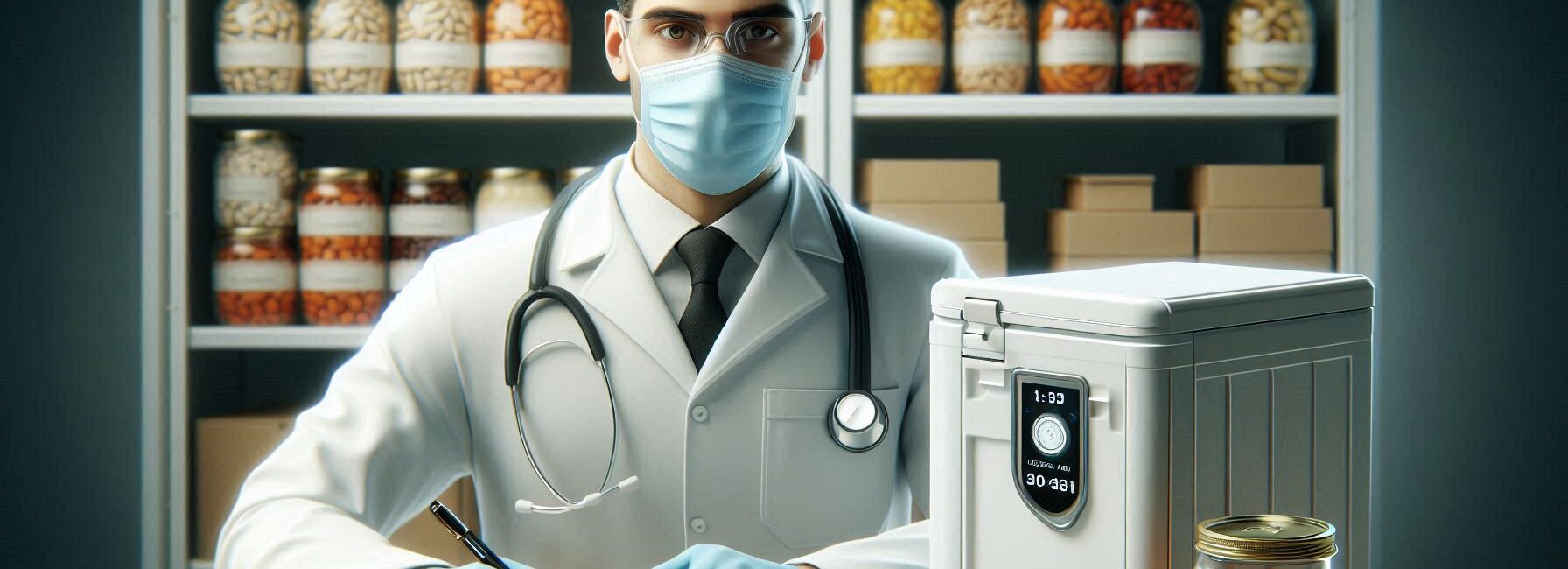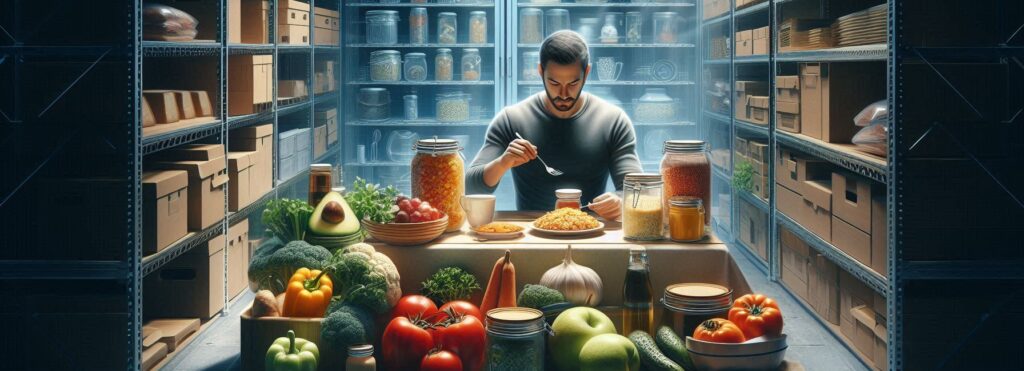
So, you’ve decided to take the plunge into food storage. Maybe it’s for a cozy winter hibernation or perhaps you’re just tired of paying exorbitant prices at the grocery store.
Whatever your reason, storing food safely is crucial—because nothing says “survivalist” like finding out your carefully hoarded beans have turned into a science experiment. Let’s dive into how to protect your precious food supply from contamination!
Understanding Food Contamination
To kick things off, let’s get familiar with what we’re up against. Food contamination can come in many forms—like that mysterious green fuzz that appeared on my leftover pizza last week (thankfully, I didn’t eat it).
1. Biological Contaminants: This category includes bacteria, viruses, and molds that love to party in our food when we least expect it. Ever heard of salmonella? Yeah, not the kind of guest you want crashing your barbecue.
2. Chemical Contaminants: These are substances like pesticides or cleaning agents that can sneak into our food supply if we’re not careful. It’s best not to mix bleach with your salad dressing—even if you think it’ll make a great TikTok video.
3. Physical Contaminants: Picture this: You’re enjoying a delicious bowl of soup when suddenly—you bite down on something crunchy and realize it’s a piece of plastic! Not ideal, right? Keeping an eye out for these items is essential.
Now that we know what we’re dealing with, let’s figure out how to keep our food safe!
Choosing the Right Storage Containers
By the way, one of the simplest ways to protect your food is by using the right containers! You wouldn’t store ice cream in a paper bag (unless you’re looking for a soggy mess), so why would you use flimsy packaging for other foods?
1. Airtight Containers: Invest in high-quality airtight containers made from glass or heavy-duty plastic. They keep pests and air out while maintaining freshness longer than my New Year’s resolutions.
2. Vacuum-Sealed Bags: For those who love saving space (and avoiding freezer burn), vacuum-sealing is fantastic! Just imagine all those perfectly preserved meats and veggies waiting for their moment to shine on dinner plates.
3. Mason Jars: Don’t underestimate these charming jars! They’re perfect for storing dry goods like rice and beans—and they look adorable lining your kitchen shelves too!
4. Label Everything: Honestly, labeling might seem tedious but trust me—it’ll save you future confusion (and possible culinary disasters). Use clear labels with dates so you know what needs to be eaten first before it becomes an archaeological find.
Maintaining Proper Temperature
Let’s see… temperature control is another critical factor in preventing spoilage and contamination—kind of like making sure your kids don’t leave ice cream out on the counter during summer break!
1. Keep It Cool: Most perishable foods prefer cooler environments where bacteria have less chance of multiplying rapidly—think refrigerator temperatures around 35-38°F (or about 1-3°C).
2. Freezer Fun: If you’ve got meat or produce that won’t be used soon enough, freeze it! Just remember to wrap everything well; nobody wants mystery meat lurking in their freezer like some horror movie villain.
3. Monitor Regularly: Use thermometers inside both fridge and freezer compartments; knowing whether conditions are right could save those leftovers from becoming science experiments!
Practicing Good Hygiene
Speaking of which… hygiene matters more than I ever realized until I found leftover spaghetti sauce caked onto my favorite spatula last week (gross!). Here are some tips:
1. Cleanliness Is Key: Before storing any new items, clean shelves thoroughly using soap water or vinegar solutions to eliminate crumbs that attract pests looking for a snack bar.
2. Regular Inspections: Check stored items regularly—not just during spring cleaning! Look for signs of infestation or spoilage early before they spread faster than gossip at family gatherings.
3. Wash Hands Often: Always wash hands before handling any food products; after all, no one wants extra seasoning courtesy of yesterday’s lunch stuck under their fingernails!
Avoiding Cross-Contamination
Interestingly enough, cross-contamination can happen faster than I can say “dinner time.” Here are some tips to prevent it:
1. Separate Raw and Cooked Foods: Keep raw meats away from ready-to-eat items—like salads or fruits—to avoid any unwelcome guests showing up at dinnertime uninvited.
2. Use Different Utensils: When preparing meals involving raw ingredients versus cooked ones (hello again chicken!), always use separate cutting boards and utensils unless you’re aiming for disaster.
3. Store Smartly in Fridge/Pantry: Place raw meats on lower shelves so juices don’t drip onto other foods while keeping canned goods towards higher levels—just think about avoiding messy surprises later on!
Conclusion
All things considered, protecting your food supply from contamination doesn’t have to feel overwhelming—it just takes a little knowledge and effort!
By understanding potential threats and implementing smart storage strategies combined with good hygiene practices will help ensure every meal remains safe and delicious rather than ending up as a regrettable adventure story.
Suggested Resources:
Food Safety Tips
https://www.fsis.usda.gov/wps/portal/fsis/topics/food-safety-education/get-answers/food-safety-fact-sheets
How To Preserve Food
https://www.healthline.com/nutrition/preserve-food
Food Storage Guidelines
https://www.foodsafety.gov/keep-food-safe/food-storage-guidelines


